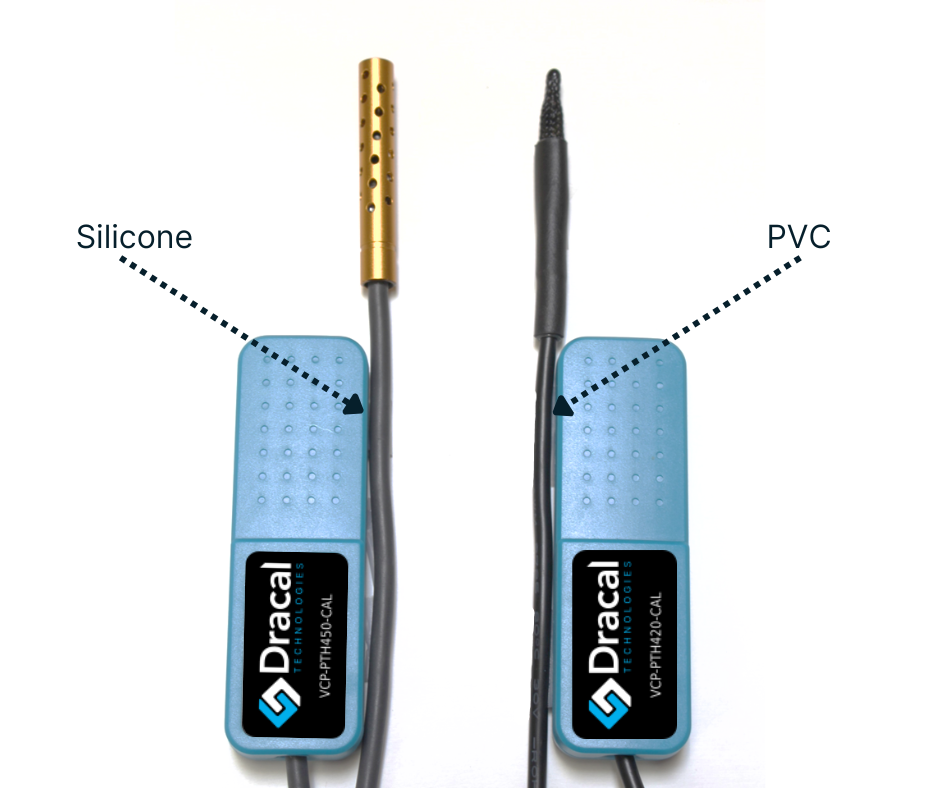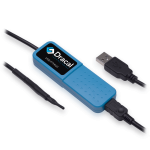Wires Covered with Silicone or PVC: Which is the Better Choice?

Our TRH (temperature and relative humidity sensors) and PTH (temperature, relative humidity and atmospheric pressure sensors) instrument series offer an aluminum-covered sensor connected to the housing by a silicone-covered cable (TRH450, PTH450). Beyond this additional sensor protection, how does using a silicone cable contribute more to the robustness of these products?
PVC-Coated Cables
|
Silicone-Coated Cables
|
|
Temperature range |
-20°C to +70°C |
-50°C to +200°C |
Flexibility |
Good flexibility at normal temperatures |
Excellent flexibility, even at low temperatures |
Chemical resistance |
Moderate resistance to certain chemicals and oils |
Resistant to oils, solvents, chemicals, and UV rays |
Electrical insulation |
Provides basic electrical insulation |
Excellent electrical insulation properties |
Fire resistance |
Moderate flame retardant properties |
High flame retardant properties |
Compression resistance |
Moderate resistance; may be damaged after compression |
Excellent continuous compression resistance |
Mechanical strength |
Excellent resistance to mechanical stress |
Moderate resistance to mechanical stress |
Applications (examples) |
Commonly used in building wiring, electrical distribution, appliances, and versatile electrical applications |
Suitable for high-temperature environments and outdoor uses (e.g., solar panels), aerospace, automotive, industrial machinery, and electrical equipment |
When choosing between silicone-coated and PVC-coated cables, it's essential to consider the application's specific requirements, such as temperature range, environmental conditions, mechanical strength, and budget constraints, as silicone-coated wires tend to be more expensive. Each type of cable offers distinct advantages and disadvantages, allowing you to select the option that best suits the intended use.
A dedicated article is available if you want to learn more about the robustness elements of Dracal products. Additionally, we have created a comparison table for the TRH series regarding different probes and their protection if you wish to explore this specific aspect of robustness.

